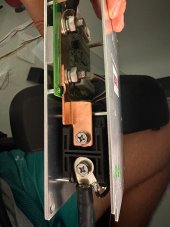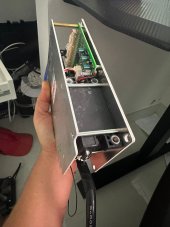HI to everyone
Found Some Grade A EVE Lipo4 cells 304ah 3,2v in Huston area for 143 dollars each and i bought 16 cells to build the battery with JDB 200amp bms.
Initial check with meter shows 3.29v on all of them .
Looking to do a capacity test by discharging and charging the battery bank.
I think after look some videos the recommended safe charge voltage is between 3.5 and 3.6 volt for this cells correct?
My question is about the discharge voltage i should use and is it safe to discharge the battery completely or should i stop when they reach 20% ?
Any suggestion on a affordable charger i could use to charge those battery fast or a safe tools to test the capacity without blowing the cells.
Thanks
Found Some Grade A EVE Lipo4 cells 304ah 3,2v in Huston area for 143 dollars each and i bought 16 cells to build the battery with JDB 200amp bms.
Initial check with meter shows 3.29v on all of them .
Looking to do a capacity test by discharging and charging the battery bank.
I think after look some videos the recommended safe charge voltage is between 3.5 and 3.6 volt for this cells correct?
My question is about the discharge voltage i should use and is it safe to discharge the battery completely or should i stop when they reach 20% ?
Any suggestion on a affordable charger i could use to charge those battery fast or a safe tools to test the capacity without blowing the cells.
Thanks





